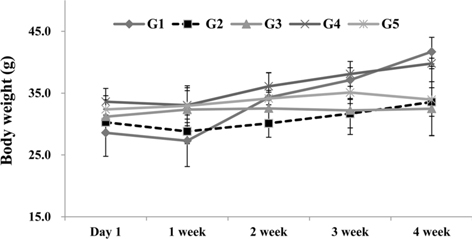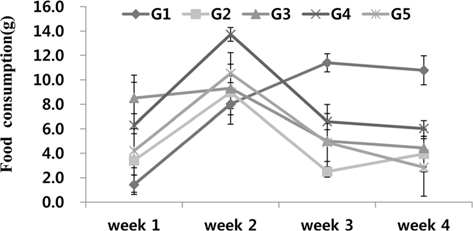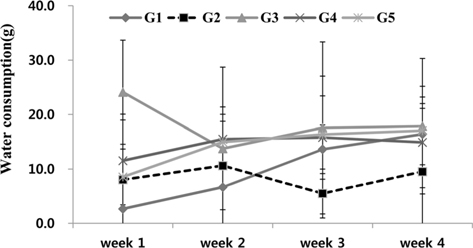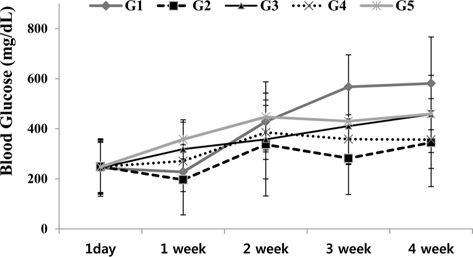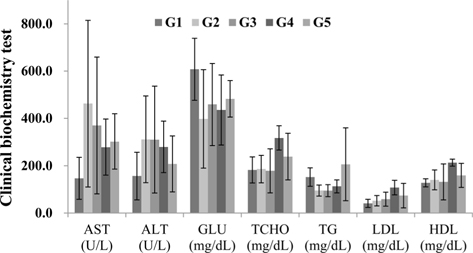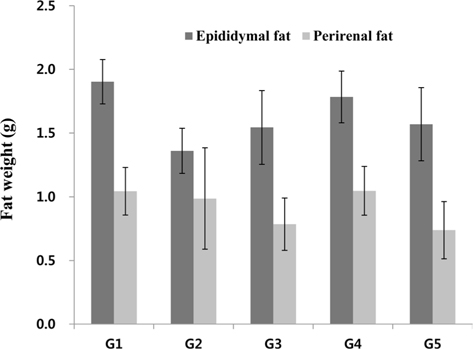



Silkworm and silkworm droppings have long been used in China and Korea as a folk remedy for the treatment of diabetes.1-Deoxynojirimycin (1-DNJ) is the hydrogenation product of nojirimycine, which was firstly discovered in Streptomyces. Natural DNJ was first isolated from the mulberry tree (Yoshikaki and Hivonu, 1976), and to date, more than 20 polyhydroxy alkaloids have been identified in mulberry and silkworm (Asano
>
Preparation of silkworm powder
Silkworm larvae (
Heat treated at 60℃, 100℃ and 150℃ for 30 min in the oven.
>
Content of 1-DNJ in silkworm extract powders
DNJ content was measured according to the method reported by Kim
>
Administration of silkworm extract powders to db/db mice
Male C57BL/KSJ-(db/db) mice (6 wk old) were purchased from Japan SLC Inc. (Japan). Mice were housed in a conventional cage at the appropriate temperature (23℃ ± 3℃) and humidity (55% ± 15%) under a 12-h light/dark cycle, and had free access to food and water. All the groups were fed a standard diet (certified irradiated global 18% protein rodent diet). After a 1-wk adaptation period, the 7-wk-old mice were divided into five groups (n = 10 in each group): G1( control group : no silkworm powder), G2(T0 ; silkworm extract powder no- heating), G3(T60 ; 60℃ / 30 min), G4(T100 ; 100℃/30 min), and G5(T150 ; 150℃/30 min), the silkworm powder was remade with diet.
>
Measurement of body fat weight and blood biochemical analysis
The mice were fasted for 3 h, and then blood samples were taken after autopsy. The biochemical analysis of blood included the measurement of the levels of TG(Triglyceride), TCHO(Total cholesterol), LDL(Low density lipoprotein), GLU(Glutamic acid), AST(Aspartate aminotransferase), and ALT(Alanine aminotransferase), which was performed with a blood biochemical analyzer (AU680, Beckman Coulter, Japan). The fat weight was estimated by measuring the circumference of the perirenal area and of the epididymis at autopsy.
1-DNJ contents in silkworm powder
The content of 1-DNJ in silkworm powder of Yeonnokjam pupae at d 3 of the 5th instar heated at different temperatures was determined. The content of 1-DNJ in the powders heated at 60℃ and 100℃ for 30 min was similar to that of the powder without heat treatment. However, in the powder treated at 150℃ for 30 min, the 1-DNJ content was approximately half of that in the other samples (6.83 mg/dL). The amount of 1-DNJ remained the same when the powder was heated to 121℃ for 15 min (Yatsunami
[Table 1.] 1-Deoxynojirimycin content in silkworm powder as a function of the heating temperature
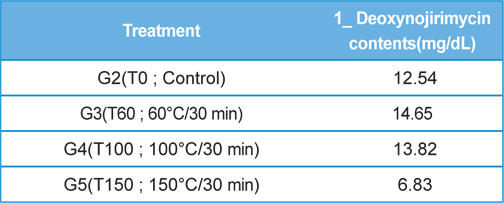
1-Deoxynojirimycin content in silkworm powder as a function of the heating temperature
Our analysis focused on the comparison between the changes in body weight of the treatment groups and the control group. In the T60 group, a statistically significant weight gain inhibition was observed compared to the T0 group (Fig. 1).
The weekly diet used in the experiments consisted of a fixed amount. The feed intake was observed once per week for 4 wk after silkworm powder administration. Mice in the T0, T60, T100, and T150 groups showed statistically significant reduction in feed intake compared to the control group (no silkworm powder administration) at 3-4 wk after administration (Fig. 2).
We prepared a fixed amount of water the day before water intake, for determining water intake quantity. The water that remained unused in the period of 24 h was subtracted from the total amount of water that was offered daily, and the difference was considered as the water intake quantity (g/mouse/d). The water intake quantity of each cage was the sum of each individual water intake value in each cage. The result showed no significant difference among the different groups (Fig. 3).
>
Blood glucose-lowering effect of silkworm extracts in the db/db mice
In the T0 and T60 groups, a statistically significant reduction in the blood glucose level was observed compared to the control group (
>
Blood biochemical analysis and change in body fat
Blood biochemical analysis indicated that in the T150 group, the level of AST was lower than that in the other groups. The levels of TCHO in the T100 group significantly decreased compared to the control groups. The levels of TG in the T0 and T60 mice were significantly decreased compared to the control groups. For GLU level, no treatment showed significant changes compared to the control groups, but GLU decreased by approximately 20% compared to control group without silkworm powder treatment (Fig. 5).
The epididymal fat weight of mice in the T0, T60, and T150 groups significantly decreased compared to the control groups, while the perirenal fat weight of mice in the T60 and T150 groups significantly decreased compared to the control groups (Fig. 6).

